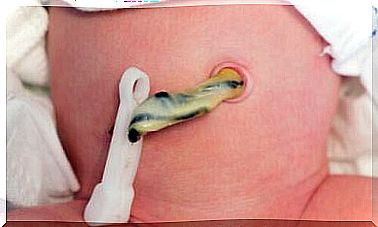What Is ADHD In Children? – Being Parents

ADHD, or Attention Deficit Hyperactivity Disorder, is a common neuropsychiatric disorder that occurs during childhood and adolescence. It is characterized by severe hyperactivity, impulsivity and lack of attention that prevent the child from developing properly in the social, school and home environment.
Usually diagnosed in childhood, this disorder often continues to manifest into adulthood. If it is not identified and treated early, it can have permanent consequences.
The brains of children with ADHD show abnormalities in certain affected areas. To learn more about this disorder, we need to distinguish between the different types and find out how the brains of children with ADHD can work.
3 types of ADHD in children: what are the differences?
There are three main classes of ADHD, which differ in the most common symptoms:
1 – Combined ADHD (inattentive / hyperactive / impulsive)
It is the most common type of ADHD. The child shows impulsive and hyperactive behavior, while being easily distracted and struggling to maintain attention.
2 – predominantly hyperactive / impulsive ADHD
In this less common type of ADHD, children show impulsive and hyperactive behavior, but most of the time they can be careful.
3 – inattentive ADHD
In this case, the children are not too active. They don’t interrupt in class or other activities, so its symptoms may go unnoticed.

How does the brain of children with ADHD work?
In this section, we’ll focus on the different aspects that make the brains of children with ADHD work:
1 – Brain areas involved
Specialists are using many modern technologies focused on brain imaging to better understand how the brain works in children with ADHD. Thanks to them, we now know that ADHD is evidence of dysfunction in certain areas of the child’s brain.
According to the researchers, two areas of the brain of children with ADHD are particularly involved in the onset of symptoms:
- The frontal lobe, normally responsible for inhibiting, organizing and modulating responses. These three functions are absent in hyperactive children.
- The striated nucleus, an area of the brain related to fine motor function and social interactions.
2 – The importance of brain neurotransmitters
ADHD causes problems in the regulatory circuits that communicate the two brain areas of children with ADHD mentioned above. These areas communicate through dopamine and norepinephrine.
Dopamine seems to be the most important. The dopaminergic system is involved in the motivation and strengthening processes.
For its part, norepinephrine is also essential. This neurotransmitter plays a role in the processes of learning, memory and alertness.
The onset of ADHD is linked to insufficient production of these two neurotransmitters, which are chemicals whose purpose is to produce correct communication between neurons.
For this to happen, there must be an adequate amount of dopamine and norepinephrine. In children with ADHD, the production of these two neurotransmitters is irregular.
Profile of a child with ADHD
Children with ADHD show signs of inattention, hyperactivity and impulsivity in specific ways. The following general symptoms are the most common when it comes to ADHD:
1 – Symptoms of lack of attention
- Children are easily distracted.
- They don’t seem to be listening.
- Little listening when they have to follow instructions and do not complete school or household chores.
- They have difficulty organizing their activities.
- Procrastinating or doing chores involuntarily.
- They lose the items.
- The child is easily distracted by external sources of stimulation.
- They forget things.
“The onset of ADHD is linked to insufficient production of dopamine and norepinephrine”
2 – Symptoms of hyperactivity or impulsivity
- The child is in constant motion.
- They have problems playing in silence.
- Children talk excessively.
- They interrupt the others.
- Problems controlling their actions and words in times of stress.
- They have mood swings

However, each child may experience this disorder differently. It is possible to have these symptoms some of the time and not have ADHD.
The e ADHD usually appears before the age of 5 years, but the diagnosis will be difficult to analyze because mobility and inattention are common in children this age. These are an integral part of normal psychomotor development and are not necessarily problematic.
A general evaluation of the child is essential because some symptoms similar to those of ADHD may reflect a variety of causes. Physical health problems can produce the same symptoms as ADHD. In addition, certain mental health problems, such as depression or anxiety, can sometimes have the same symptoms as attention deficit disorder.
In short, it is important to see a doctor for a complete checkup. In this way, efficient and timely intervention can be promoted.









